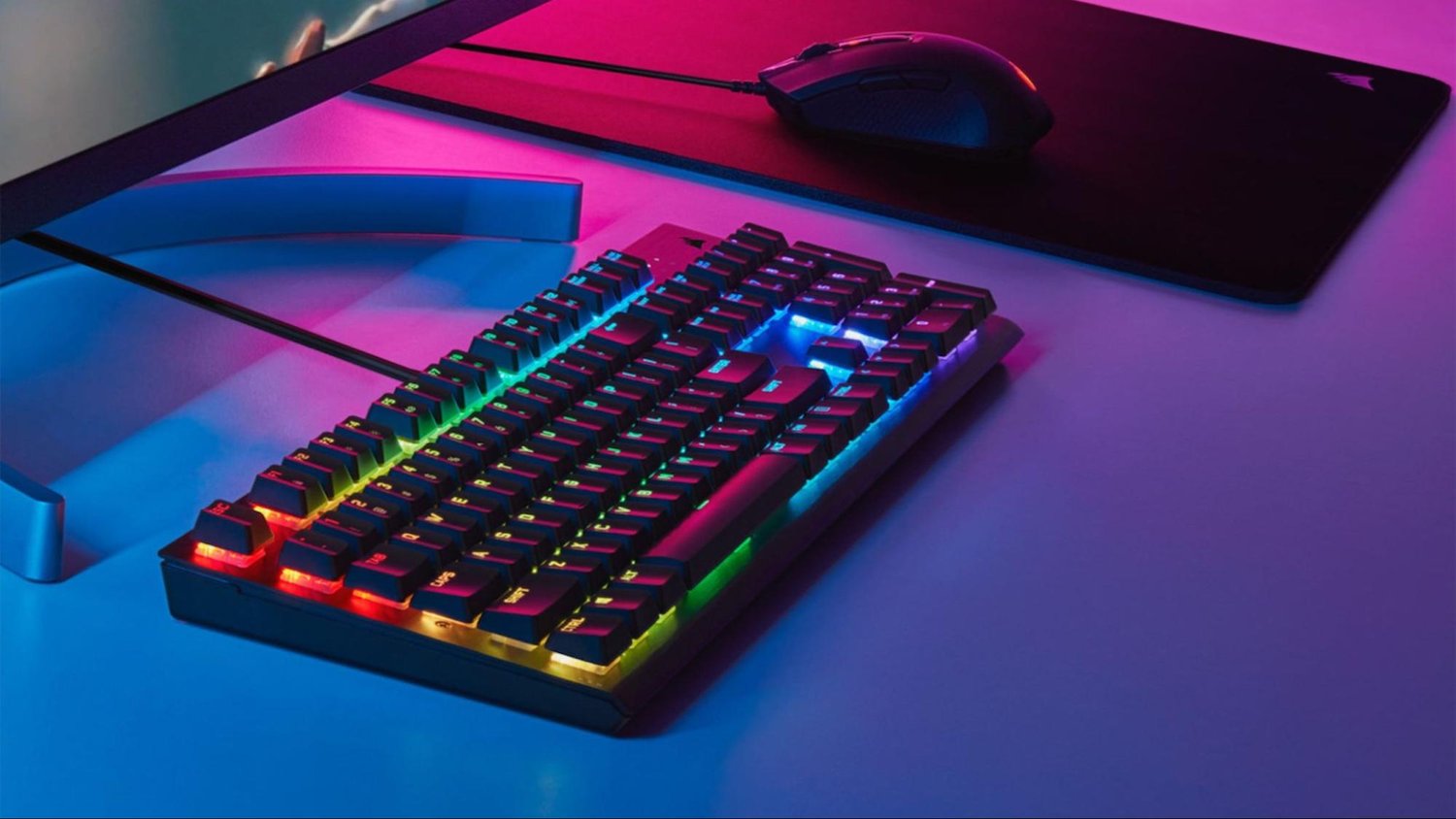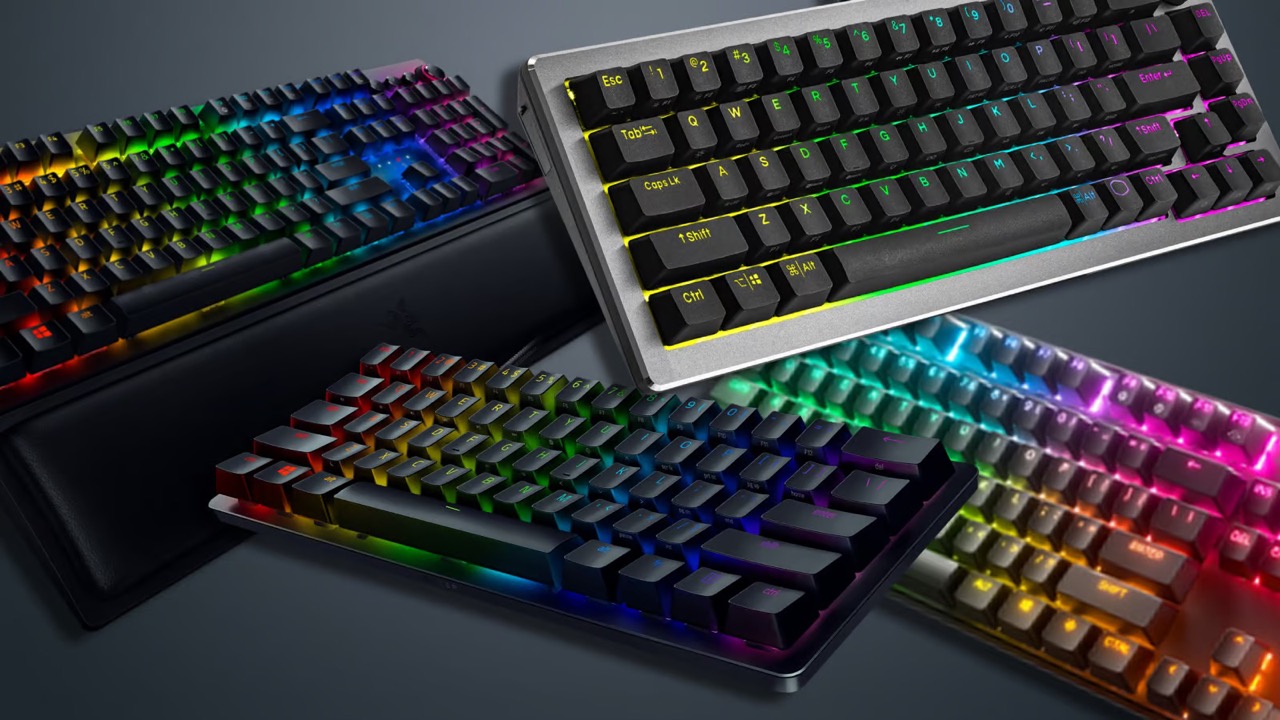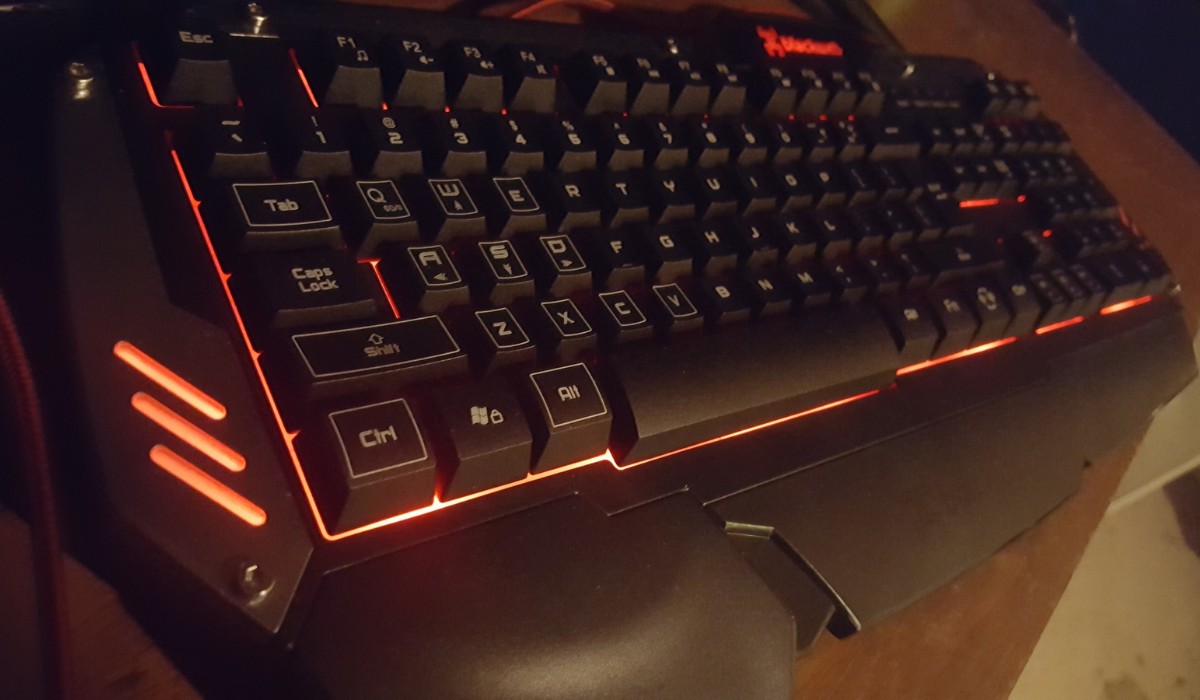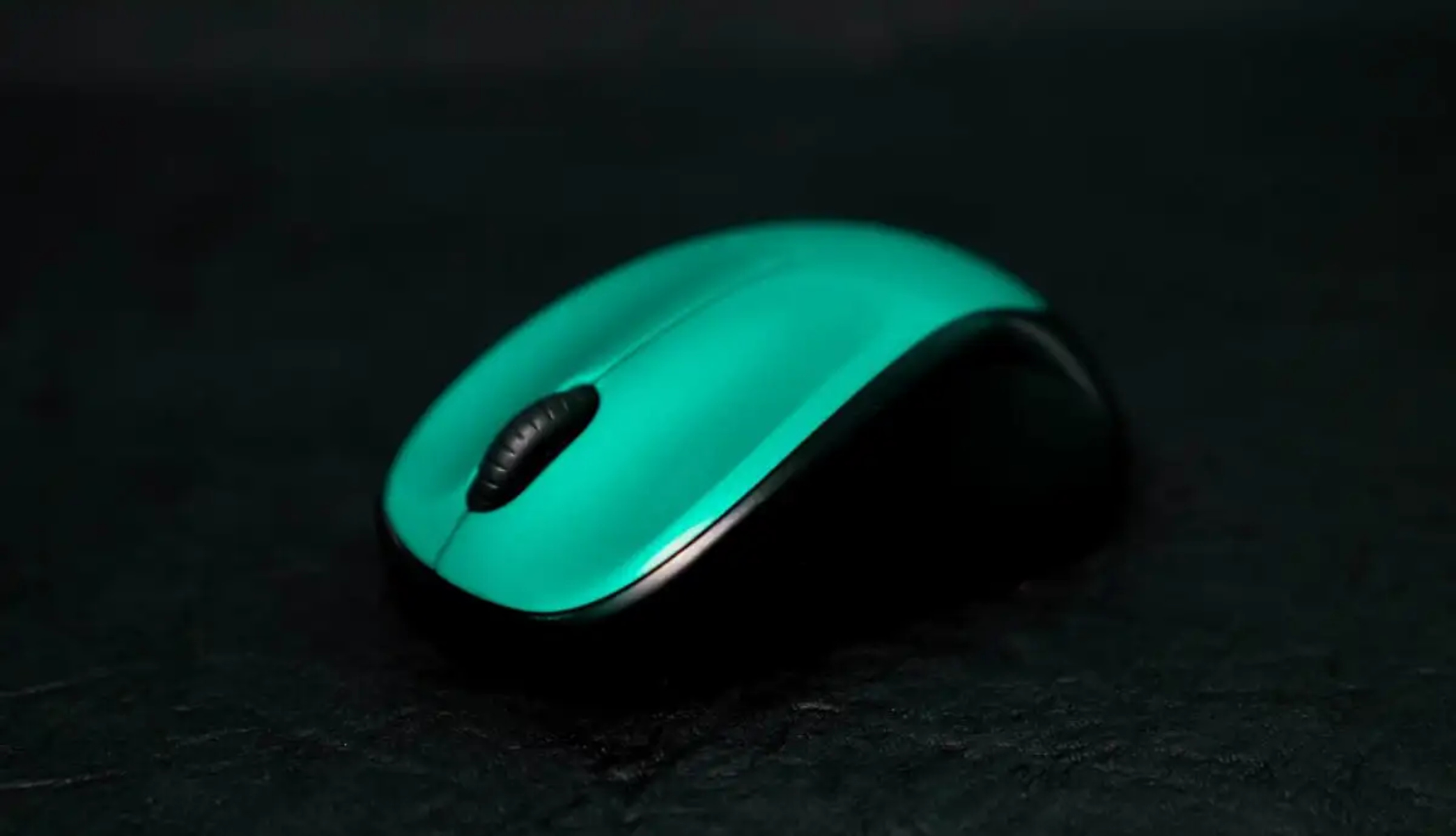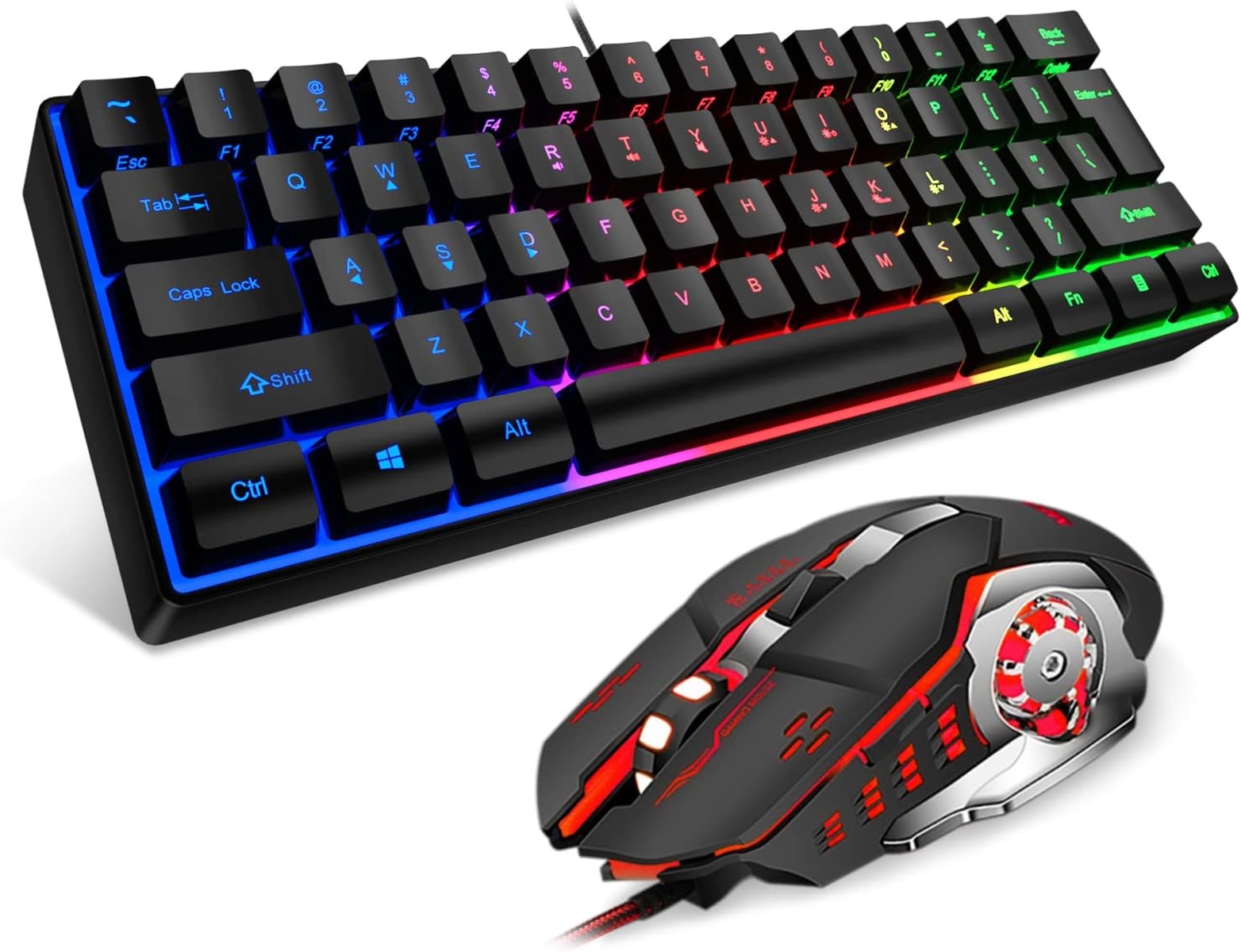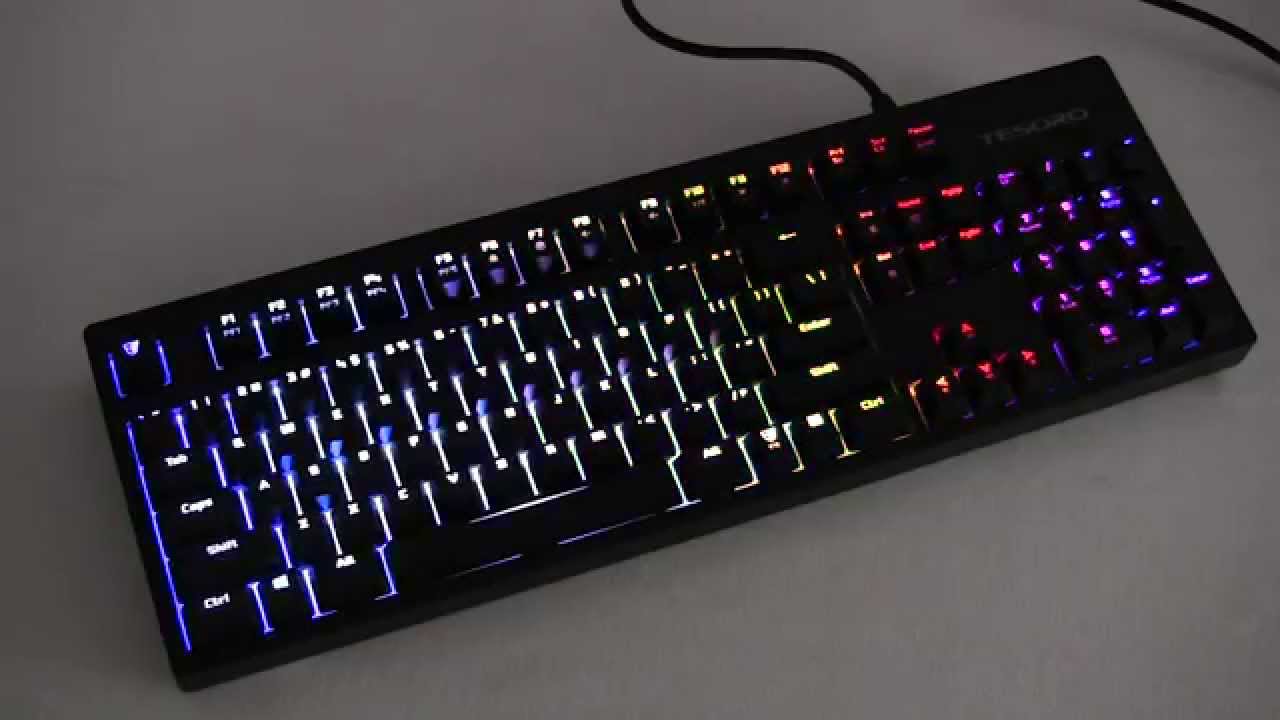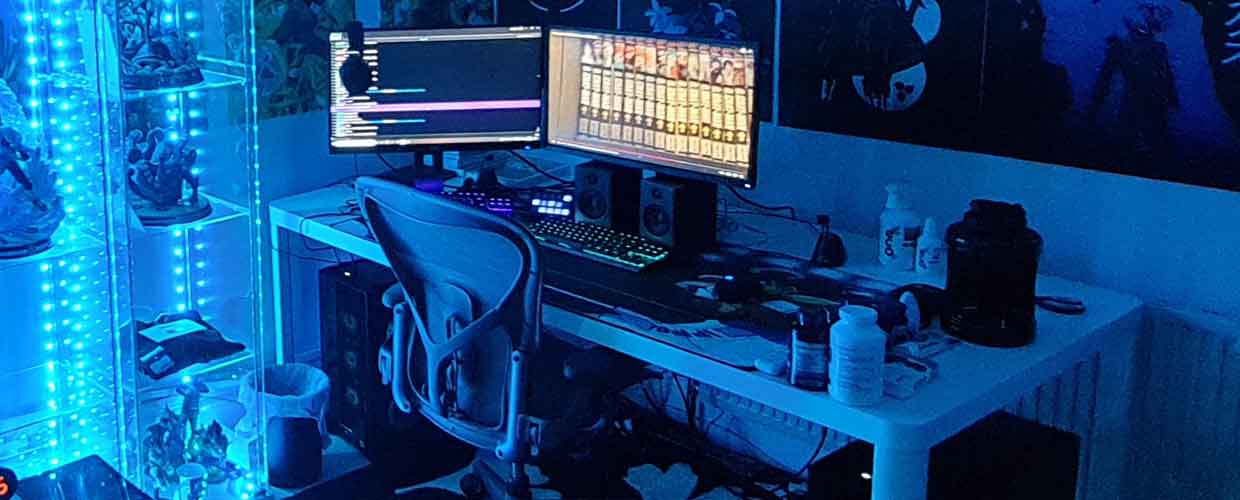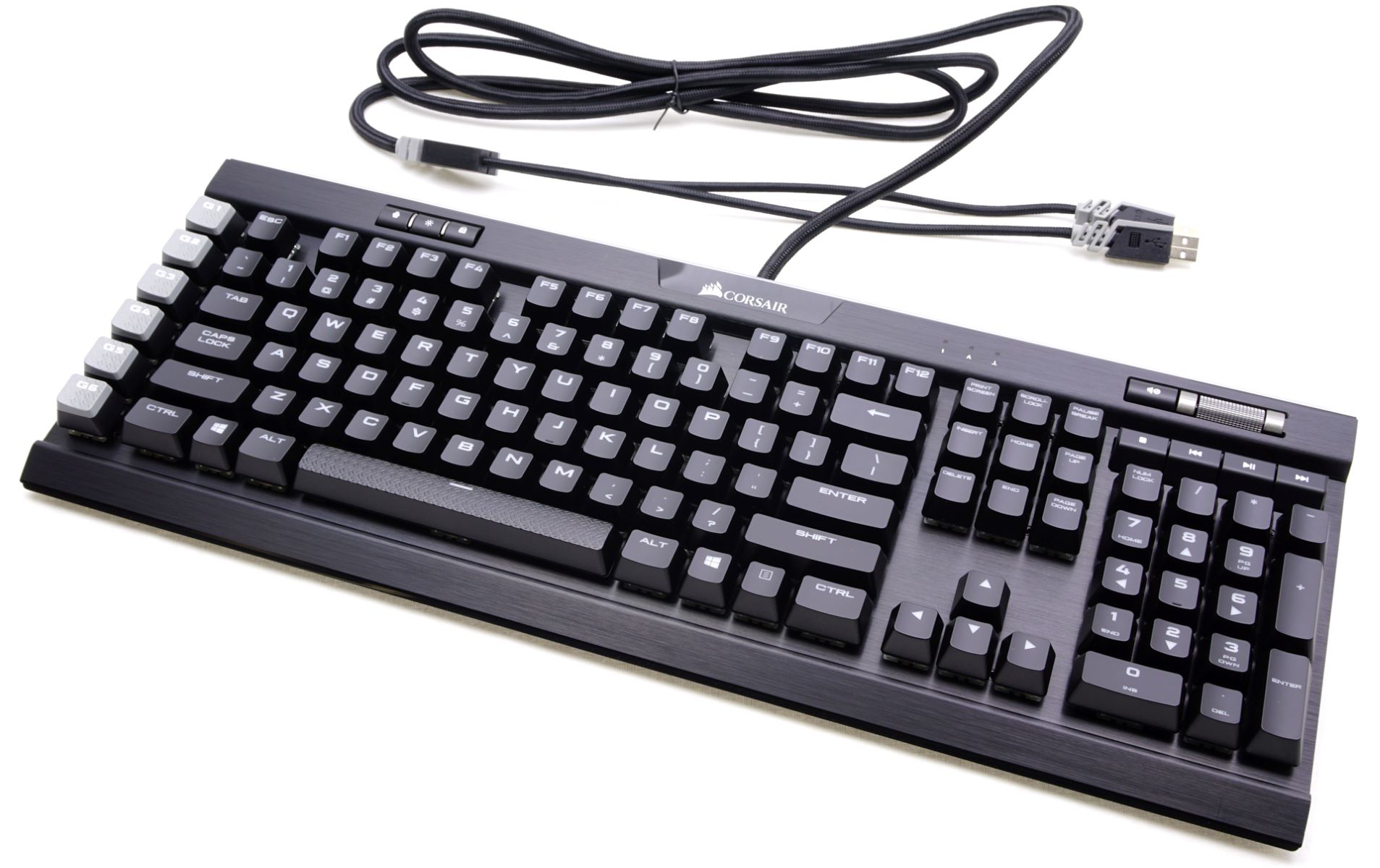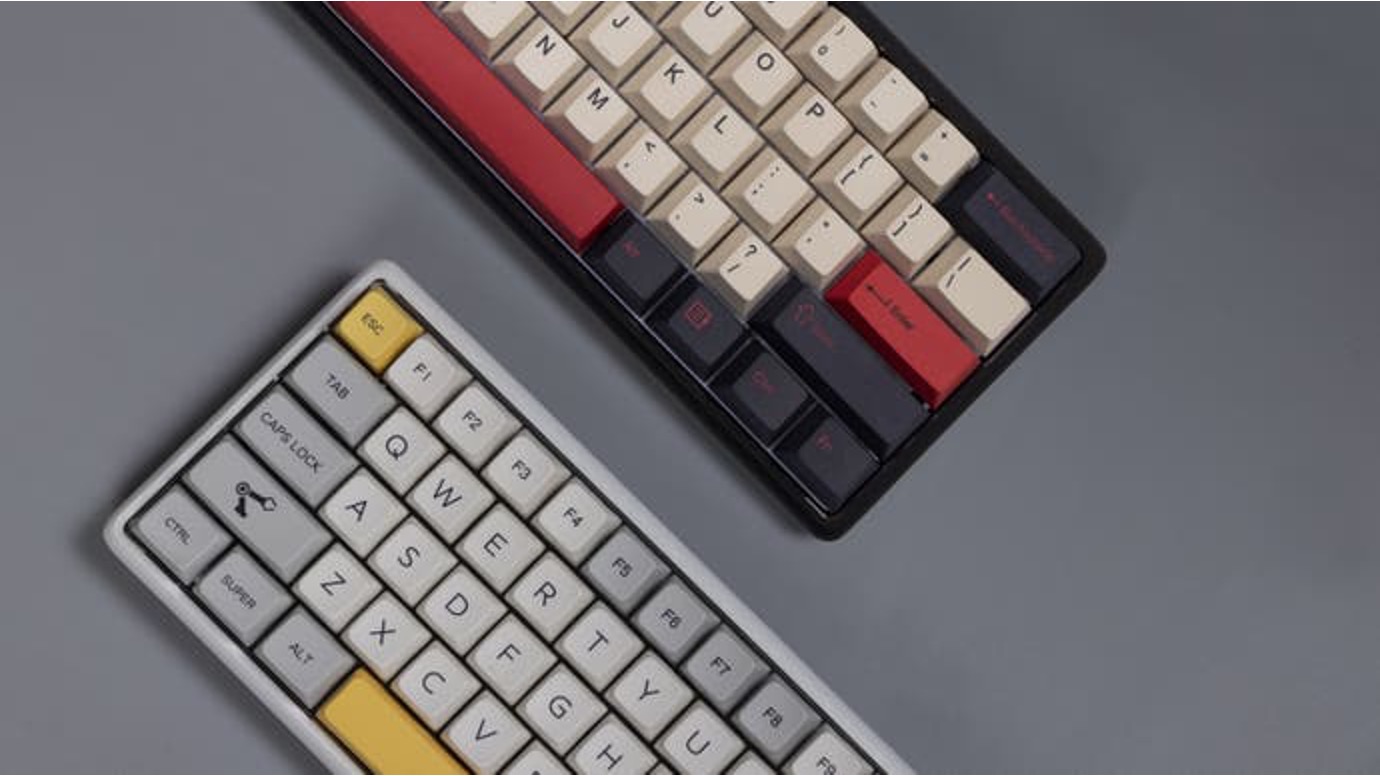Introduction
Gaming keyboards are essential tools for gamers, offering precision, speed, and customization to enhance the gaming experience. One crucial aspect of a gaming keyboard that significantly impacts performance is its polling rate. Understanding the significance of polling rate and its optimal settings can make a substantial difference in a gamer's performance.
In this comprehensive guide, we will delve into the concept of polling rate, its importance in gaming, common polling rates for gaming keyboards, factors to consider when choosing a polling rate, recommended polling rates for different types of games, and how to change the polling rate on your gaming keyboard. By the end of this article, you will have a clear understanding of how polling rate influences gaming performance and how to optimize it for your gaming needs.
Whether you are a seasoned gamer looking to fine-tune your gaming setup or a newcomer eager to optimize your gaming experience, this guide will provide valuable insights into one of the critical aspects of gaming peripherals. Let's embark on this journey to uncover the best polling rate for a gaming keyboard and its impact on gaming prowess.
What is Polling Rate?
The polling rate of a gaming keyboard refers to the frequency at which the keyboard reports its input to the computer. It is measured in hertz (Hz) and indicates how many times per second the keyboard sends data to the computer. A higher polling rate means that the keyboard sends input more frequently, resulting in lower input lag and a more responsive gaming experience.
Essentially, a higher polling rate allows the keyboard to communicate more frequently with the computer, providing real-time updates of keypresses and ensuring that the actions performed on the keyboard are reflected instantaneously on the screen. This is particularly crucial in fast-paced gaming scenarios where split-second reactions can determine victory or defeat.
For instance, a keyboard with a polling rate of 1000Hz sends input to the computer 1000 times per second, while a keyboard with a polling rate of 500Hz does so 500 times per second. The higher the polling rate, the more responsive the keyboard becomes, minimizing the delay between keypresses and on-screen actions.
It’s important to note that the polling rate of a keyboard is different from its response time. While polling rate pertains to how often the keyboard reports its input, response time refers to the time it takes for a keypress to be registered by the keyboard and transmitted to the computer. Both factors contribute to the overall performance of a gaming keyboard, and optimizing both can lead to a more seamless and immersive gaming experience.
Understanding the concept of polling rate is fundamental for gamers seeking to maximize their gaming setup’s efficiency. In the subsequent sections, we will explore the significance of polling rate in gaming and how it can be tailored to suit various gaming preferences and genres.
Importance of Polling Rate in Gaming
The polling rate of a gaming keyboard plays a pivotal role in determining the responsiveness and accuracy of player inputs during gaming sessions. In the realm of competitive gaming, where split-second decisions can sway the outcome of a match, a high polling rate is paramount for gaining a competitive edge.
One of the primary reasons why polling rate holds such significance in gaming is its direct correlation to input lag. Input lag, the delay between pressing a key and the corresponding action occurring on the screen, can significantly hinder a gamer’s performance, especially in fast-paced games that demand swift reflexes and precise movements. A higher polling rate substantially reduces input lag, ensuring that the actions executed on the keyboard are swiftly translated into on-screen responses, thereby enhancing the overall gaming experience.
Furthermore, the impact of polling rate becomes particularly pronounced in genres such as first-person shooters (FPS), real-time strategy (RTS), and multiplayer online battle arena (MOBA) games, where precise and instantaneous inputs are imperative for outmaneuvering opponents and executing strategies with utmost accuracy. In these competitive environments, a higher polling rate empowers gamers to act with unparalleled speed and precision, potentially turning the tide of battle in their favor.
Another crucial aspect of polling rate’s importance in gaming is its influence on the consistency of input delivery. A higher polling rate ensures that the keyboard’s inputs are consistently and rapidly transmitted to the computer, minimizing the likelihood of missed or delayed commands. This consistency is invaluable in maintaining fluid gameplay and enabling gamers to execute complex maneuvers and combos without encountering input-related hindrances.
As gaming continues to evolve and demand ever-increasing levels of precision and responsiveness, the importance of polling rate in gaming peripherals, especially gaming keyboards, cannot be overstated. By optimizing the polling rate to align with the demands of specific game genres and individual playstyles, gamers can unlock the full potential of their gaming prowess and immerse themselves in a seamless, ultra-responsive gaming environment.
Common Polling Rates for Gaming Keyboards
Gaming keyboards are available with various polling rates, each offering distinct advantages tailored to different gaming preferences and performance requirements. The most common polling rates for gaming keyboards are 125Hz, 250Hz, 500Hz, and 1000Hz, each presenting unique characteristics that cater to diverse gaming needs.
- 125Hz: Keyboards with a polling rate of 125Hz report input to the computer 125 times per second. While this polling rate may suffice for general computer usage and non-competitive gaming, it may exhibit noticeable input lag in fast-paced, action-packed games where split-second reactions are crucial.
- 250Hz: A polling rate of 250Hz doubles the input reporting frequency to 250 times per second, offering improved responsiveness and reduced input lag compared to 125Hz keyboards. This polling rate strikes a balance between performance and compatibility, making it suitable for a wide range of gaming genres.
- 500Hz: Keyboards with a polling rate of 500Hz transmit input to the computer 500 times per second, delivering heightened responsiveness and significantly minimizing input lag. This polling rate is well-suited for competitive gaming scenarios, particularly in FPS, RTS, and MOBA games, where precision and rapid input translation are paramount.
- 1000Hz: At the forefront of polling rates, keyboards operating at 1000Hz report input a staggering 1000 times per second. This ultra-high polling rate ensures unparalleled responsiveness, virtually eliminating input lag and providing gamers with the most immediate and accurate input translation. It is the preferred choice for professional gamers and enthusiasts seeking the utmost precision and performance from their gaming peripherals.
While these polling rates represent the most prevalent options available, some gaming keyboards may offer intermediate polling rates, such as 500Hz or 750Hz, to provide additional customization and flexibility in tailoring the keyboard’s performance to the user’s specific requirements.
Understanding the distinctions between these common polling rates empowers gamers to make informed decisions when selecting a gaming keyboard that aligns with their gaming preferences and performance expectations. In the subsequent sections, we will explore the factors to consider when choosing a polling rate and recommend optimal polling rates for different types of games, enabling gamers to optimize their gaming setup for peak performance and responsiveness.
Factors to Consider When Choosing a Polling Rate
When selecting the polling rate for a gaming keyboard, several factors come into play, each influencing the overall gaming experience and performance. Understanding these factors is crucial for tailoring the keyboard’s polling rate to meet specific gaming requirements and playstyles.
- Gaming Genre: Different gaming genres demand varying levels of precision and responsiveness. For fast-paced, action-oriented games such as first-person shooters (FPS) and multiplayer online battle arena (MOBA) games, a higher polling rate, such as 500Hz or 1000Hz, is preferable to ensure instantaneous input translation and minimal input lag. Conversely, slower-paced games or non-competitive gaming scenarios may be adequately served by lower polling rates.
- Personal Preference: Gamers often have individual preferences regarding input responsiveness. Some players may prioritize ultra-responsive input and opt for the highest polling rate available, while others may find a lower polling rate more comfortable and conducive to their gaming style. Understanding personal preferences is essential in determining the ideal polling rate for an enjoyable and immersive gaming experience.
- Hardware Compatibility: It is imperative to consider the compatibility of the gaming keyboard’s polling rate with the computer system and other peripherals. While modern systems can generally accommodate high polling rates, older hardware or certain configurations may have limitations that affect the keyboard’s performance at ultra-high polling rates.
- Performance Impact: Higher polling rates can exert a greater demand on system resources, albeit minimal in most cases. Gamers should consider the potential impact of a keyboard’s polling rate on overall system performance, especially in conjunction with other resource-intensive applications or peripherals.
- Customization Options: Some gaming keyboards offer customization software that allows users to fine-tune the polling rate to their precise specifications. This level of customization empowers gamers to tailor the keyboard’s performance to their liking, adjusting the polling rate to achieve the optimal balance between responsiveness and system compatibility.
By carefully evaluating these factors, gamers can make informed decisions when selecting the polling rate for their gaming keyboard, ensuring that it aligns with their gaming preferences, hardware capabilities, and performance expectations. In the subsequent section, we will recommend optimal polling rates for different types of games, providing valuable insights into tailoring the keyboard’s polling rate for diverse gaming scenarios.
Recommended Polling Rate for Different Types of Games
Optimizing the polling rate of a gaming keyboard based on the specific requirements of different game genres is instrumental in achieving peak performance and responsiveness. Tailoring the polling rate to suit the demands of various games empowers gamers to immerse themselves in a gaming environment that seamlessly translates their inputs into on-screen actions with precision and immediacy.
- First-Person Shooters (FPS) and Multiplayer Online Battle Arena (MOBA) Games: These fast-paced, action-oriented games demand rapid reflexes and precise movements. For optimal performance, a polling rate of 500Hz or 1000Hz is recommended. The heightened responsiveness afforded by these polling rates ensures that every keystroke is instantaneously translated into on-screen actions, granting players a competitive edge in intense, high-stakes battles.
- Real-Time Strategy (RTS) and Multiplayer Online Battle Arena (MOBA) Games: In strategy-based games that require swift and accurate input commands, a polling rate of 500Hz or 1000Hz is advantageous. The immediate translation of commands facilitated by these polling rates allows players to execute intricate strategies and maneuvers with precision, contributing to a more fluid and immersive gaming experience.
- Role-Playing Games (RPGs) and Adventure Games: While RPGs and adventure games may not necessitate the ultra-high polling rates crucial in fast-paced competitive gaming, a polling rate of 250Hz or 500Hz can enhance the responsiveness of player inputs, contributing to a more engaging and immersive gameplay experience. The improved input translation provided by these polling rates ensures that players can navigate virtual worlds and engage in combat with heightened precision and fluidity.
- Casual and Non-Competitive Gaming: For casual gaming scenarios or non-competitive gameplay, polling rates of 125Hz or 250Hz may suffice. While these polling rates may exhibit slightly higher input lag compared to their higher-frequency counterparts, they are generally suitable for leisurely gaming sessions that do not demand split-second reactions or ultra-precise input translation.
By aligning the polling rate of their gaming keyboard with the demands of specific game genres, players can optimize their gaming setup for unparalleled responsiveness and accuracy, ensuring a seamless and immersive gaming experience tailored to their individual preferences and playstyles.
How to Change the Polling Rate on Your Gaming Keyboard
Changing the polling rate on a gaming keyboard often involves utilizing the keyboard’s customization software or firmware to adjust this critical setting. While the specific method may vary depending on the keyboard model and manufacturer, the following general steps can serve as a guide for modifying the polling rate to suit individual gaming preferences:
- Install Customization Software: If the gaming keyboard comes with dedicated customization software, install the software on your computer. This software provides a user-friendly interface for adjusting various settings, including the polling rate, to fine-tune the keyboard’s performance.
- Access Keyboard Settings: Open the customization software and navigate to the section that allows users to modify the keyboard’s settings. Look for options related to polling rate or report rate, as these settings control how frequently the keyboard sends input to the computer.
- Adjust Polling Rate: Within the keyboard settings, locate the polling rate adjustment feature. Depending on the software, this may be presented as a drop-down menu, slider, or specific numerical input field. Select the desired polling rate from the available options, such as 125Hz, 250Hz, 500Hz, or 1000Hz, based on your gaming requirements.
- Apply Changes: After selecting the preferred polling rate, apply the changes within the customization software. The software will communicate the new polling rate setting to the gaming keyboard, ensuring that it operates at the specified frequency for optimal responsiveness and performance.
- Verify Settings: To confirm that the polling rate adjustment has been successful, test the keyboard’s performance in a gaming environment or utilize software that displays the current polling rate of connected input devices. This verification step ensures that the keyboard is operating at the intended polling rate.
It is important to consult the user manual or online resources provided by the keyboard’s manufacturer for detailed instructions tailored to the specific model. Additionally, some gaming keyboards may offer onboard controls or shortcuts for adjusting the polling rate without relying on customization software, providing users with alternative methods for modifying this essential setting.
By customizing the polling rate to align with individual gaming preferences and performance requirements, gamers can elevate their gaming experience, enjoying heightened responsiveness and precision that cater to the demands of diverse game genres and playstyles.
Conclusion
Understanding the intricacies of polling rate and its impact on gaming performance is pivotal for gamers seeking to optimize their gaming setups. The polling rate of a gaming keyboard directly influences input responsiveness, input lag, and overall gaming immersion, making it a critical factor in achieving peak performance across diverse game genres.
From the common polling rates of 125Hz, 250Hz, 500Hz, and 1000Hz to the factors influencing the choice of polling rate, gamers are equipped with the knowledge to make informed decisions when selecting a gaming keyboard that aligns with their gaming preferences and performance expectations. By tailoring the polling rate to suit the demands of specific game genres and personal playstyles, gamers can unlock the full potential of their gaming prowess, enjoying heightened precision, responsiveness, and fluidity in their gaming experiences.
Moreover, the ability to modify the polling rate through dedicated customization software or onboard controls empowers gamers to fine-tune their gaming keyboards, ensuring that the keyboards operate at the optimal polling rate for their gaming needs. This level of customization allows for a seamless transition between gaming scenarios, from intense, high-stakes battles in first-person shooters and MOBAs to leisurely exploration in RPGs and adventure games, all with the assurance of ultra-responsive input translation and minimal input lag.
As gaming continues to evolve and demand ever-increasing levels of precision and responsiveness, the significance of polling rate in gaming peripherals, especially gaming keyboards, cannot be overstated. By leveraging the insights provided in this guide, gamers can embark on a journey to uncover the best polling rate for their gaming keyboards, enhancing their gaming experiences and elevating their performance to new heights.
With a comprehensive understanding of polling rate and its optimal settings, gamers are poised to conquer virtual worlds, outmaneuver opponents, and immerse themselves in a gaming environment where every keystroke translates into seamless, instantaneous on-screen actions, delivering a truly immersive and exhilarating gaming experience.







